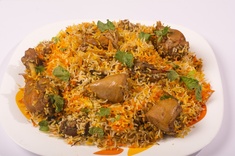
The Biryani Blog
Last updated: Saturday July 1st, 2023
Report this blog
Introduction
The other day, I was having a fabulous almost royal-like dinner of Hyderabadi biryani and it suddenly came to my mind to write a blog telling you all something about the most famous Indian food item out there – the biryani!
In this blog, we will have a look at the origin and a brief history of the biryani, its several varieties, the method of preparation and try to find why it is the most popular Indian dish along with several other questions!
Join me in as we try to find the answers to those questions. An important sidenote: This blog has the potential to make you hungry and crave for Indian food. 🍛😋
Biryani is a dish that literally needs no introduction! As food expert Pushpesh Pant writes, it is a quintessential celebratory dish in India and an aromatic delicacy that dazzles as a sublime one-dish meal.
It is that one dish that both Indians and non-Indians unanimously love to indulge. Chances are if you are a foreigner, the first Indian dish that you had or will have is biryani!
So what is really special about it? Let's begin now!
Origin and Etymology
First things first, let's first try to find the origin of this dish. It may sound a bit untrue but biryani technically isn't really Indian, as it was born somewhere outside of the subcontinent. And where do you think it was born in? If legends and historical records are to be believed, it is Persia, or Iran, as it is called now.
According to a legend, it was the Turko-Mongol ruler Tamerlane (Timur) who brought it to India when he was trying to invade the country. It was the usual diet for his several army men, prepared freshly in earthen pots with whatever meats they could find.
Another less popular theory holds that it was Arab traders who introduced it to the Malabar Coast in southern India. There are mentions of somewhat similar dish in a Tamil piece of literature called Oon Soru, written in 2 AD, used to feed warriors.
Do you notice some similarities between these theories? They were used to feed warriors! So, perhaps, biryani had been the staple diet of military men and then eventually made it to the nobles and then to the common masses.
Whatever be its origin, one thing is sure that biryani has become widely popular not only in India, but across the subcontinent and its worldwide diaspora.
Onto its etymology now! The word biryani is derived from the Farsi word brishtah (برشتہ) meaning fried onions as the dish was originally made by garnishing rice with fried onions and meat. Another theory states that it originated from birinj (برنج), the Farsi word for rice. Yet another theory states that it is derived from biryan (بریان) which means to fry or roast. If you ask me, I think the third theory is the most probable. But you are free to support any of those.
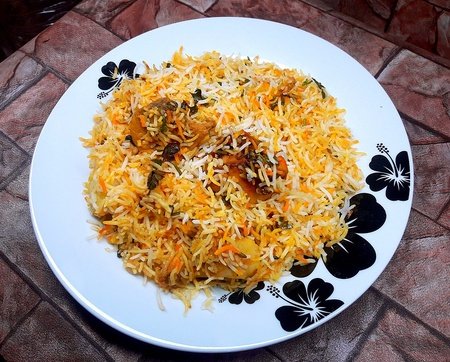
A Brief History of Biryani
The origin of the dish has already been discussed. Let's now try to find its history within the subcontinent.
During the time of its introduction, India was ruled by various Islamic dynasties who mainly came from Afghanistan, Iran or even Turkey! The dish became immensely popular among the royal and noble folk back then. Though we don't have evident data, it can be said that the commoners didn't have biryani for a very long time.
It was in the royal kitchens of the Mughal Empire, where biryani came to be known in its modern form. According to historians, it was said to be a mixture of the Persian pilaf (a dish which I would cover shortly) and native spicy rice dishes of India.
As the Mughal Empire expanded southwards and eastwards, the dish was introduced to all those parts of the empire.
Three of the cities widely renowned for their local varieties of biryani are Hyderabad, Lucknow and Kolkata. The Nizams and Nawabs of these cities were huge fans of these local dishes and it embodied their foreign origin yet local upbringing and assimilation.
One widely popular story regarding the birth of the modern form of biryani revolves around Mumtaz Mahal, the most beloved wife of Shah Jahan and the Empress consort of the empire. (Yes, the Taj Mahal was built for her!)
It is said that she once visited the army barracks and found the soldiers to be very weak and impoverished. She immediately ordered the royal chefs to create a dish to ensure their balanced nutrition. The result was biryani! The rice was fried in ghee to give it a nutty flavour. Meat, spices and saffron were added to it before cooking the mix over a wood fire. After all, she was a good empress unlike she is portrayed these days.
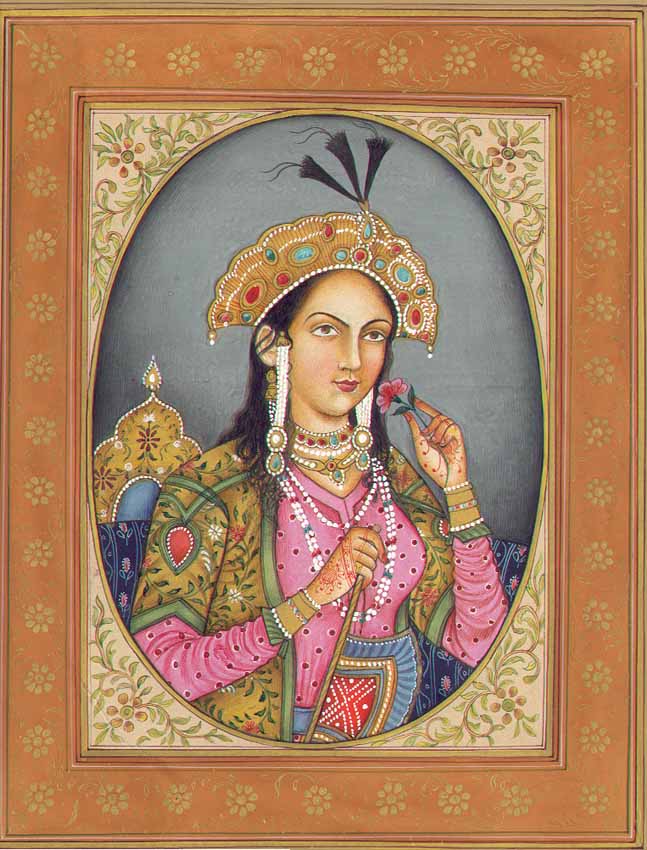
Preparation and Ingredients
The perfect biryani requires carefully measured ingredients and a technique which varies according to region. Traditionally, the dum pukht method (slow breathing oven in Persian) was used to make it. The ingredients are added into a pot and slowly cooked on charcoal so as to allow the steam to soften the ingredients. The pot, which had been sealed, allows the steaming meat to tenderise in its own juices and flavours the rice.
The foremost ingredient for biryani is rice, obviously. Basmati rice is the most common type of rice used. Butter and/or ghee are usually preferred to cook it rather than oil. Meat is also important and should be in plentiful quantity for the perfect combination! Various spices are required – turmeric, chilli, coriander, the good ol' garam masala to name a few. Other than those, you can use various nuts and dry fruits as well, such as raisins and almonds for a final touch!
These days, vegetarian biryanis are also in the trend. Dum (potato) biryani is very popular among urban folk, mostly in western India. Other vegetables such as carrots, capsicums (bell peppers) and peas can also be used.
These days, biryani is usually prepared in a handi (a wide-mouthed vessel usually made of copper) or a saucepan. The rice is first soaked in water and then added to the vessel. Then the other ingredients are added. After heating it for a few minutes, the meat and spices are added. The heat is lowered for the next few minutes and the vessel is covered with a lid. Turn off the heat and allow it to cool for 10 minutes. Finally, serve it on a plate and garnish it with coriander leaves and some extra onions. Your exquisite dish is ready to be indulged!
Reasons for Popularity
The reasons for its immense popularity are many. Some of those are mentioned below:
✔️ Fabulously delicious.
✔️ Versatility – can be made with meats and vegetables alike.
✔️ Can be made with leftover rice or can be left to consume even after a whole day!
✔️ Succulent.
✔️ It is a hearty meal. Regardless of the time of the day you're eating it, you will always find it appealing to both your taste buds and stomach!
✔️ Umpteen varieties. Local varieties of the biryani can be found across the subcontinent – from Kashmir in the north to the Maldives in the south, Balochistan in the west and Burma in the east, and even in the Andaman and Nicobar Islands!
✔️ Can be fused with other cuisines. Chinese food is immensely popular in India and biryani is no exception in some form of Sinification, with Sichuan biryani becoming trendy these days.
Regardless of all these reasons, it takes quite a lot of time to prepare it. It takes no less than 40 minutes to prepare a meal for a group of two people.
Varieties
The varieties of this noble dish are many. Here are five of the most popular:

Kolkata biryani
Kolkata biryani is one of the most popular varieties of biryani not just in India, but in abroad as well. Made with aromatic basmati rice, tender meat (usually chicken), several pieces of boiled potatoes (or dum, as they call it in Bangla) and sometimes eggs as well. It has been devoured for more than a century now and has been one of those unforgettable things you definitely have to relish when you visit the City of Joy.
There has been a constant debate among patrons regarding which is better – the Calcuttan or Hyderabadi biryani. I personally really love it. The mouth-watering combination of chicken and potatoes is absolutely great! Legends have it that the Nawab of Bengal was unable to afford meat and hence added potatoes into it. There is this slight sweetness and it is topped off with saffron, striking a perfect balance with spices and aroma.
Hyderabadi biryani
The most popular type of biryani in abroad. It is delectable and flavourful. The rice is remarkably half boiled in the dum pukht method layered with fried onions, coriander and of course, mutton.
It has a strong aroma because of kewda, rose water and saffron. While other biryanis have their tastes due to meat, the Hyderabadi biryani is dominated by saffron. The chefs of the Nizam of Hyderabad reportedly created more than 50 variants to appease him and the one with mutton became his all-time favourite and eventually India's favourite. Though the biryani is not the most ordered type in India, it is, in fact, the most popular type of biryani on the global stage.
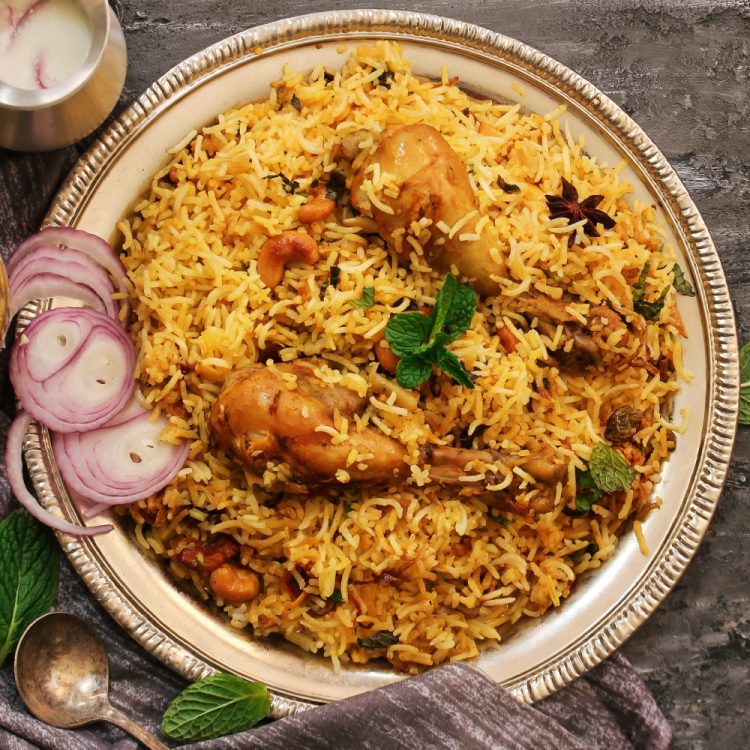

Lucknowi biryani
The Lucknowi (or Awadhi) biryani is a variety of biryani from the city of Lucknow in Uttar Pradesh. Over the years, it has gained significant exposure and has become popular nowadays. It is yet another delectable combination of meat, spices and aromatic rice, often enhanced with milk and dry fruits and nuts.
It is softer than other biryanis because of a distinct method used to prepare it called yakhni, wherein the meat is slowly boiled for at least two hours. It was devised by the chefs of the Nawab of Awadh and is the main inspiration for the Calcuttan biryani. It itself has influences from the original Mughlai dish and is also sweet in taste.
Kashmiri biryani
The Kashmiri biryani involves cooking the rice and meat in yogurt, ghee, saffron and some aromatic native spices. The aroma of flavour-infused rice and the succulent and meat leave a strong aftertaste on your palate.
It also draws influence from the Mughlai biryani. It is a mix of tender chicken, dried fruits and Kashmiri spices, topped off with saffron. It is one of the newer varieties and has gained popularity only recently.
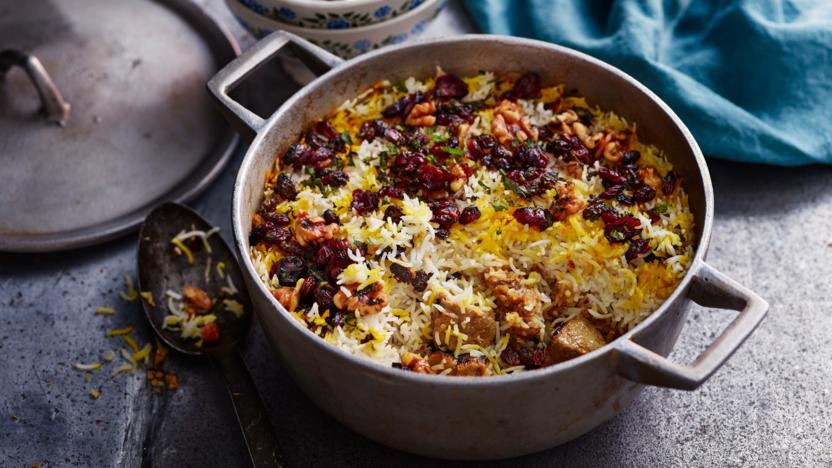
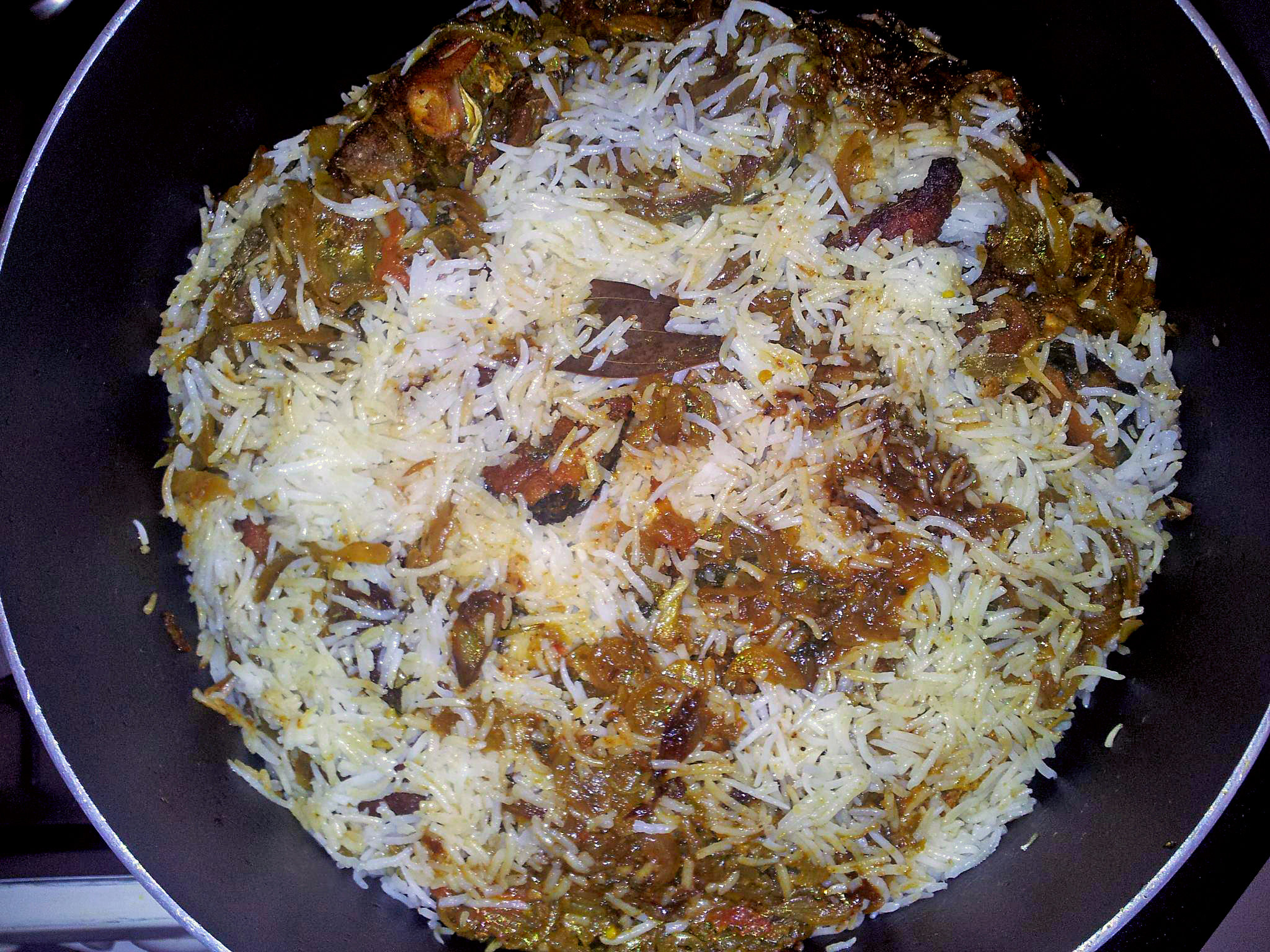
Malabar biryani
The Malabar biryani (sometimes also known as Thalassery biryani, after a city in Kerala). It is one of India’s most loved biryanis, though unfortunately, I was largely unaware of this type until researching for this blog. It has a sweet and savoury taste.
The main ingredients are soft chicken wings, mild spices from the south and a type of rice known as kaima, deviating from the usual basmati in the north. It is famous for its generous amount of sauteed cashews, sultana raisins and fennel seeds used in it.
It is also cooked in a different method. The rice is prepared separately from the gravy and is mixed with it only at the time of serving.
Politics
Politics with biryani!? You might be wondering have I gone nuts or something. But this is true.
Biryani, for a very long time, has been associated as a symbol of invasion and cultural dominance. The current government-in-power are since long demeaning the biryani and "encouraging" people who truly consider themselves Indian to abandon the dish. Why? This is difficult to explain. If you have read news recently about India, you might have heard a lot of news regarding the mistreatment of Muslims and their culture and rituals. These organisations are targeting everything even vaguely related to them by calling them not-Indian and all.
What they fail to recognise is that India has always been a land which welcomed everyone alike, at least it did in the ancient periods. The Persians, the Afghans and the Turks came as invaders but they have surely assimilated within the Indian community and are an inseparable part of it.
This is all politics and propaganda and ... I believe I should stop now.
Similar Dishes
Okay, now that we have covered the basic information about biryani, now let's try to clear the confusion of you guys. I've heard a lot of people confuse between biryani, pilaf and khichdi. Though the differences between them are quite subtle and difficult to notice, but I would try to explain them without confusing you, of course.
What's the difference between biryani and pilaf?
Pilaf (or Pulao, as it is called in India) is another dish that originated in Persia. So what's the difference between them?
Well, the most striking difference is the way of preparation. It takes quite a long time to make biryani while pulao can be made in less than half of the time. Pulao is almost exclusively vegetarian in India whereas biryani comes in both vegetarian and non-vegetarian variants.
Pulao is a side dish whereas biryani is a whole meal in its own right. Biryani has a more opulent recipe involving several spices and other accompaniments while pulao is usually simple rice dish. It is cooked in a low to high flame and hence not very soft.

The dish of matar (peas) pulao, being served with raita and papad
And what about khichdi?
Khichdi is a completely different dish which originated in ancient India. It is a mix of rice and lentils and is usually yellow in colour. It has minimal amount of spices and vegetables in it. It is often liquid-ish.
It is often said to feed khichdi to the ill so that they can get a balanced nutrition, whereas both pulao and biryani have lots of spices and calories.

Khichdi being served accompanied with coriander leaves and potatoes.
Conclusion
So there you have it! A brief blog about biryani. I hope I was able to explain you everything I could. What came as the staple diet of invaders is now so assimilated in Indian cuisine that hardly anyone would believe that it came from another country a couple centuries ago!
Anyway, now that you know so many things about biryani, would you like to try it? Have you ever had it before? If yes, then what do you think about it? What variety is your favourite? Is there anything similar in your cuisine? I would like to know everything and you can tell me those in the comments!
Food blog seems like an interesting thing to do! I might do some more next time. Also, I would like to tell you that due to approaching exams, I will be entering in a phase of partial dormancy, that is I will not release any new blogs but I will still comment and respond to replies. Until then, bye! :)

Open the image in a new tab to see it more clearly.
Absolutely, I would love to learn about Brazilian food and cuisine. :)
A similar Chinese dish is the claypot rice, which is popular in winter. It takes a lot of effort/skill not to burn it.
This is also one of the differences which I forgot to mention. Pulao and khichdi are almost exclusively made in cookers but not biryani.
It seems claypot is similar to biryani except the fact that it isn't yellowish. Another thing similar between India and China! :)
Yes, those are delicious combinations. You're a vegetarian, right? So how did you eat Hyderabadi biryani?
Oh, one more thing! Biryani is often mentioned as one of the national dishes of Pakistan. Sindhi biryani is immensely popular across the border in India as well. Another biryani variant that I should've mentioned is the Dhakaiya (of Dhaka, Bangladesh) biryani. As JWatson24 said above, it is pretty similar to the Kolkata one except that it has no potatoes and instead of chicken, it has goat meat.
Now I have a conundrum: what's better? This blog or biryani?!